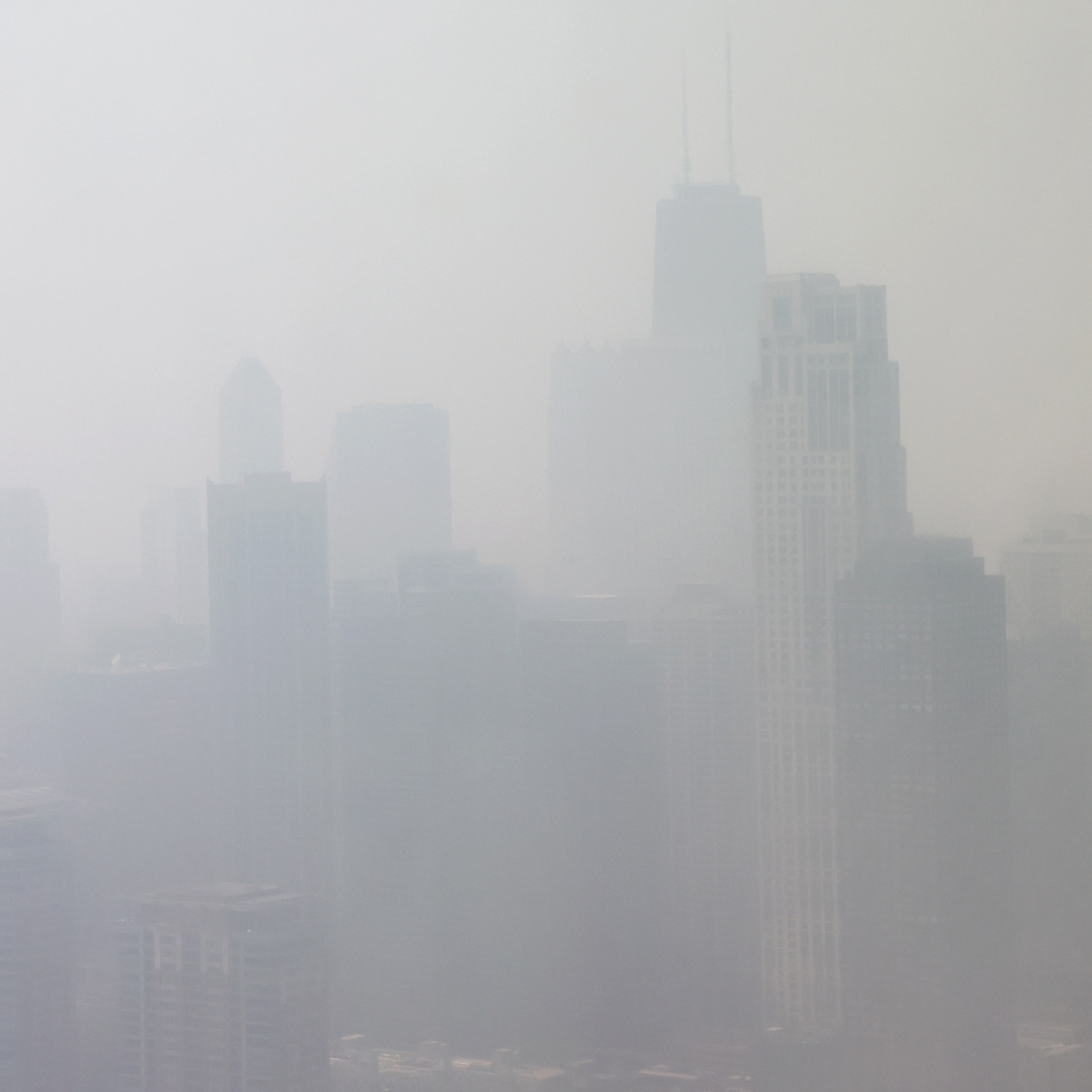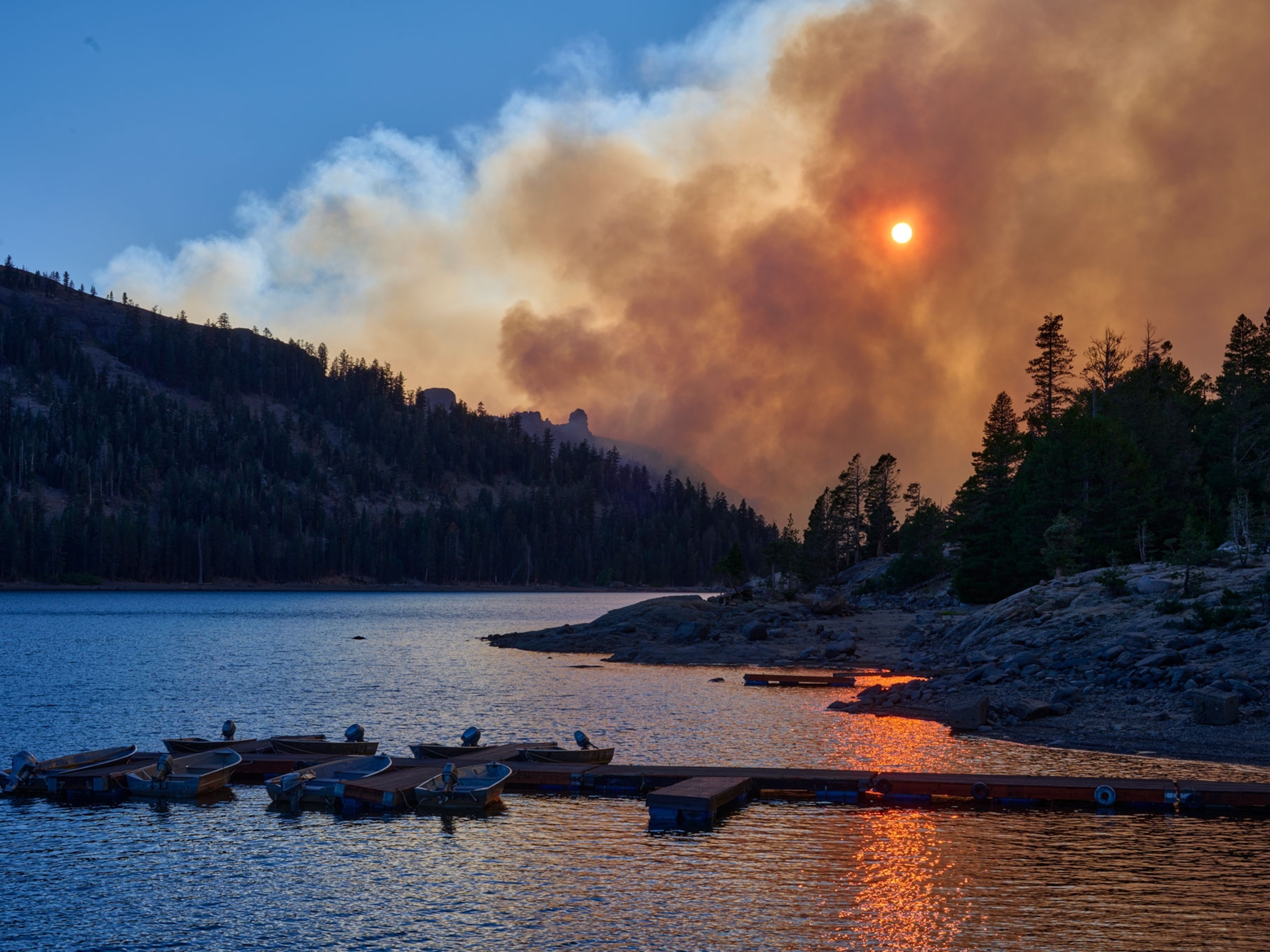
Wildfire smoke linked to higher COVID-19 death rates
A new study finds 2020 wildfires may have caused more than 19,000 COVID-19 cases and 700 deaths.
Smoke from last year’s wildfires in California, Oregon, and Washington, contributed to a significant increase in COVID-19 cases and deaths in those states, according to a new study.
“The wildfires exacerbated the pandemic substantially,” says Francesca Dominici, a Harvard biostatistician and author of the study published Friday in Science Advances. Without the smoke from the fires, there might have been 19,742 fewer COVID-19 cases and 748 fewer deaths from COVID-19, the study found.
Wildfire smoke contains thousands of different compounds, but one of the most prevalent is particulate matter measuring 2.5 micrometers across—PM2.5. A well-established health threat, PM2.5 is closely monitored by the Environmental Protection Agency (EPA), providing enough data to examine its population impact.
While PM2.5 emissions from traffic and industry have been reduced in recent years in the U.S., wildfire smoke has become a major source. Recently published research shows that, during a wildfire event, smoke can account for nearly half the particulate pollution in the U.S. West and a quarter of national levels as it blows across the country.
Scientists are still learning the full extent to which wildfires can threaten human health, but early research suggests the smoke may be more toxic than previously realized.
How smoke from this year’s fires in California, the Pacific Northwest, and Canada will affect COVID-19 case rates, as the deadlier and more contagious Delta variant leads to a resurgence the pandemic, remains unclear. While 2020’s wildfires broke records for size, this year the Dixie Fire—California’s second largest wildfire on record—has burned over half a million acres to date. Historic wildfires are also raging in Turkey and Greece.
“Inhalation of PM2.5 is compromising our ability to fight the virus,” says Dominici. “Right now what’s really scary is that the Delta variant is even more contagious. People who are unvaccinated would be very susceptible [to COVID-19].”
The dangers of PM2.5
When PM2.5 enters your body, it causes problems in two ways.
First, says Sarah Henderson, the scientific director of environmental health services at the British Columbia Centre for Disease Control, “It gunks up your upper respiratory system.”
Like the legs of a caterpillar, certain cells in the body have little hairs that are constantly pushing invaders up and out through mucus. “That’s why you have to blow your nose,” says Henderson.
PM2.5 may inhibit that expulsion process by destroying and blocking some of those cells, she says, potentially making it easier for the coronavirus to get in.
Second, says Henderson, wildfire smoke distracts your immune system.
Unlike larger pieces of particulate matter, PM2.5 is small enough to penetrate deep into human lungs, prompting an immune attack from the body. With the immune system thus occupied, the body is vulnerable and the COVID-19 virus may be more likely to generate an infection.
At the individual level, the best way to protect yourself is to be vaccinated, wear masks that offer protection against both viruses and PM2.5, use air filters at home, or evacuate when too much smoke pollution makes it necessary.
Following the smoke
For their new study, Dominici and her colleagues gathered data from 92 counties in California, Oregon, and Washington, where most of last year’s fires took place. Because COVID-19 can take weeks to emerge after an individual is exposed to the virus, the study looked at positive cases up to 28 days after wildfire smoke exposure. More than half of the counties—52—saw an increasedr incidence of COVID-19.
Across all counties studied, wildfire PM2.5 was associated with 11 percent more COVID-19 cases and 8 percent more deaths. However, that increase varied widely by county. In Butte County, California, and Whitman County, Washington, for example, cases rose by 17 and 18 percent respectively. (See a county-by-county breakdown here.)
To determine which types of particulate matter were coming from wildfire smoke and which from other sources of pollution such as cars, Dominici enlisted Harvard’s Loretta Mickley, who studies air pollution and climate change.
Using satellite data, Mickley and her team could see where plumes of wildfire smoke emerged and where they were headed. EPA air quality monitors told them how those plumes were increasing pollution at ground level.
Essentially, she says, the satellites told her where to look, while the sensors told her what was there.
Using publicly available health data and estimating what PM2.5 levels would have been without wildfires, the researchers were able to model the likely percentage by which COVID-19 cases increased. They took into account other factors that might influence case rates: temperature, the pre-fire local prevalence of the disease, a county’s population, and the mobility of the population, which they gleaned from Facebook data.
Dominici says they can’t be completely certain any particular COVID-19 case resulted from wildfire smoke exposure. There were other potentially influential measures the study didn’t examine: a person’s willingness to wear a mask; a family gathering with a positive individual; socioeconomic status; a positive individual’s preexisting health conditions; or whether other historical sources of PM2.5 had already predisposed a community to health risks, which would raise its risk for infection. That may account for some cases, but overall, says Dominici, that doesn’t negate the strong association they found between spikes in dirty air and ensuing COVID-19 case rates.
Other research supports the link. In Reno, Nevada, wildfire smoke exposure in 2020 led to an 18-percent increase in COVID-19 cases, according to a study published last month by Daniel Kiser, a data scientist at the Desert Research Institute. “The levels of air pollution we see during a wildfire smoke event are astronomical,” Kiser says.
Dominici says the numbers in her study are likely an underestimate because she and her team only looked at counties where wildfires actually occurred—whereas smoke can travel for hundreds of miles.







